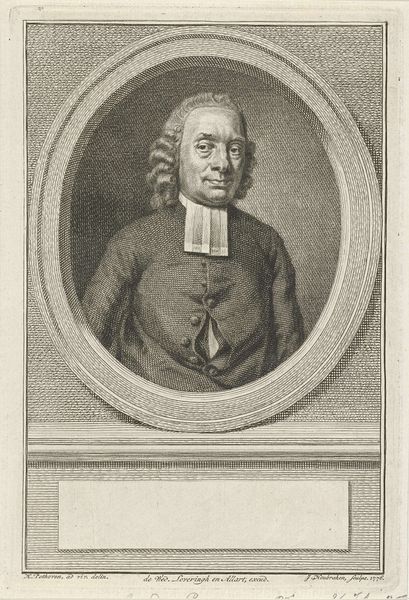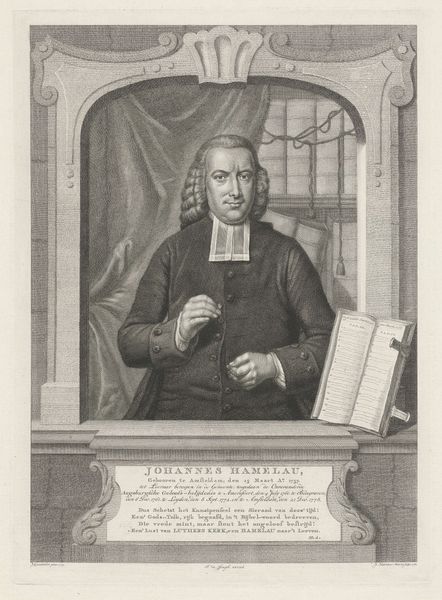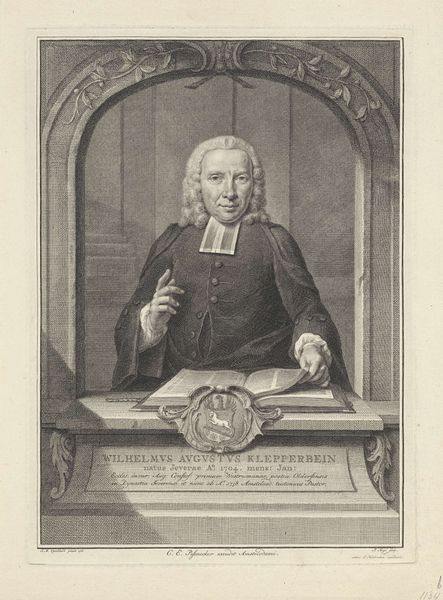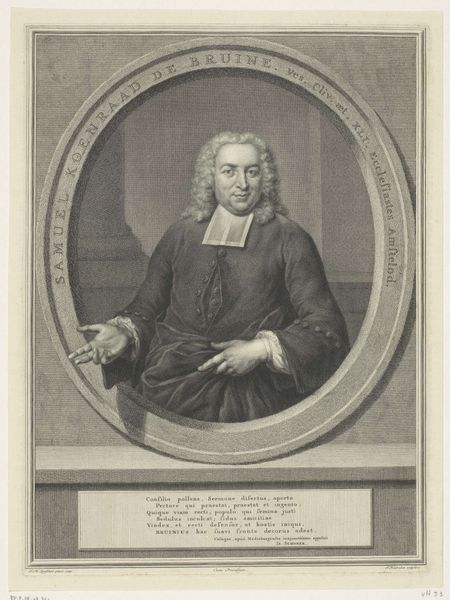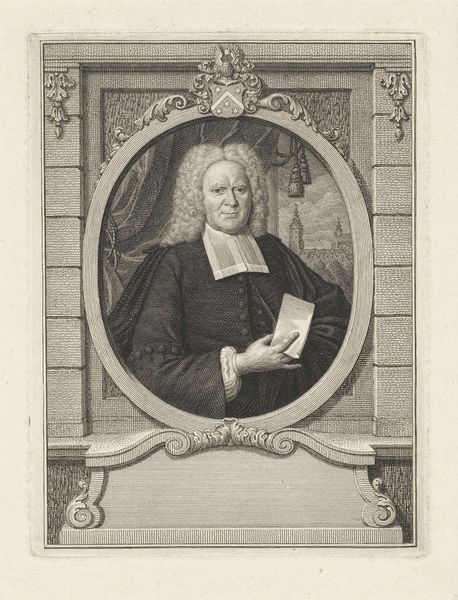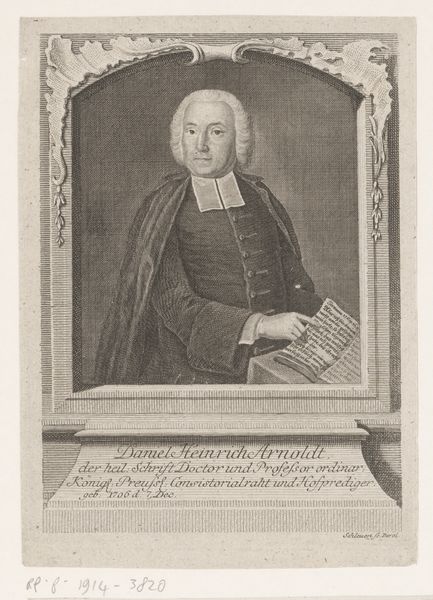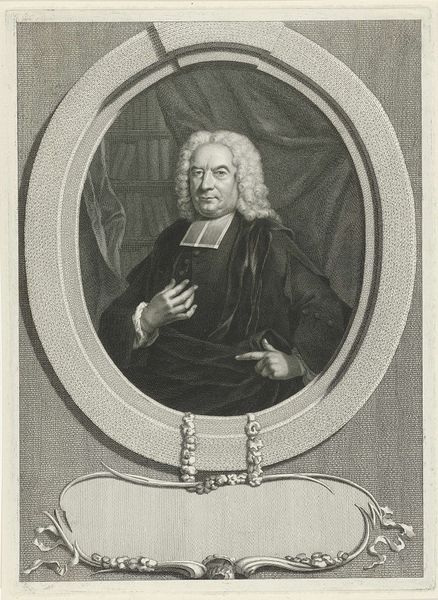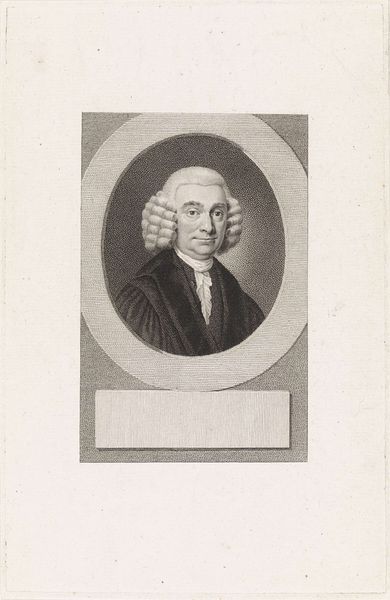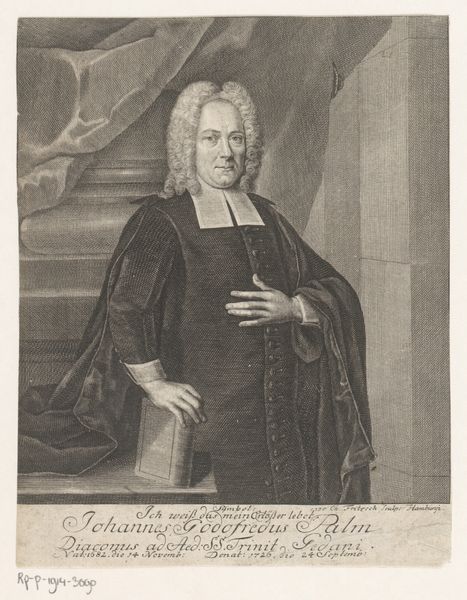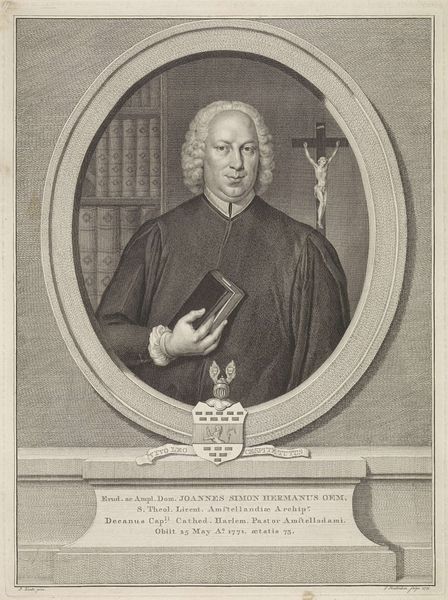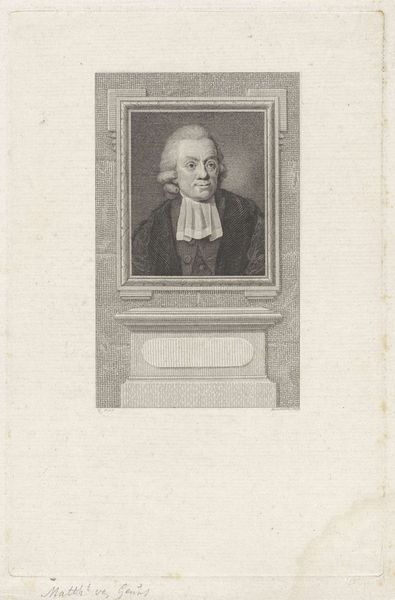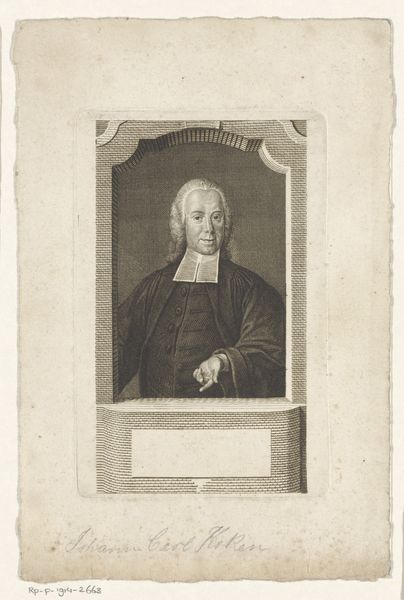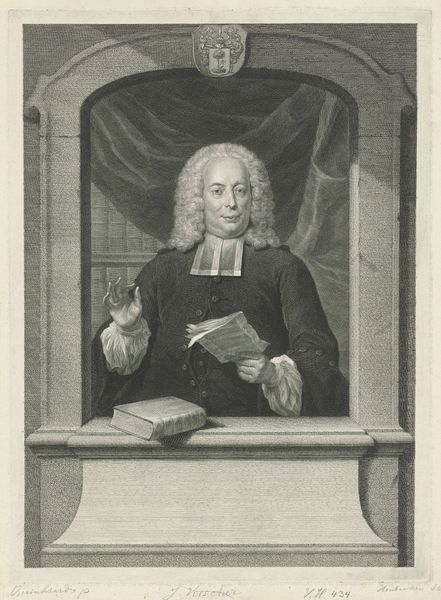
Dimensions: height 345 mm, width 251 mm
Copyright: Rijks Museum: Open Domain
Editor: Here we have Jacob Houbraken's "Portret van Aaron le Grand," an engraving dating back to the late 1770s. What strikes me is the framing of the figure, like he's presenting himself from a stage. How do you interpret this work? Curator: The frame is quite important; it suggests a constructed identity, and invites us to see how symbols are deployed to construct that identity. Notice how the window mimics a proscenium. Aaron, already elevated by his collar and wig, further projects his status through gesture – that knowing, almost didactic presentation of self. What unspoken narratives are being enacted here? Editor: So, it's more than just a straightforward portrait? What kind of narrative do you think Houbraken is trying to get across? Curator: Consider the Enlightenment context. Aaron le Grand, presented almost like a performer, embodies reason and learnedness, yet framed by artifice, raising questions about sincerity and societal role-playing. Think about the cultural implications of presenting oneself in such a constructed manner. Where does the individual begin, and the performance end? Editor: It is quite compelling when you put it that way. I suppose that’s still relevant today, the way people construct online personas. Curator: Precisely. Houbraken offers us a tableau ripe for psychological projection. This portrait speaks not just of Aaron, but of the societal expectations of his time, echoed in our digital age. Editor: That really reframes my understanding of it. Thanks, that’s really made me rethink the portrait's intent! Curator: Indeed! The visual echoes across centuries reveal that human expression, mediated through symbols, holds steadfast across time.
Comments
No comments
Be the first to comment and join the conversation on the ultimate creative platform.
